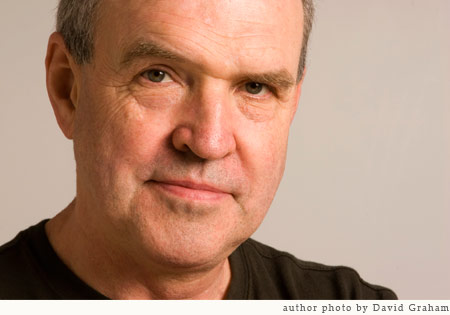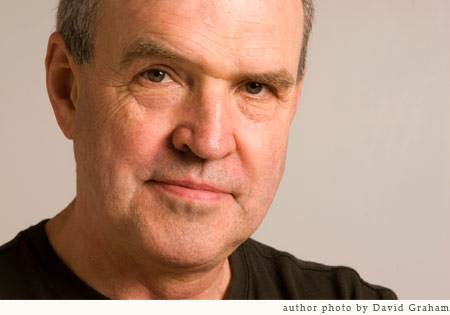 Photo: David Graham
Photo: David Graham
If you Google the term “a scholar and a gentleman,” the first result to pop up is a picture of Witold Rybczynski — or it would be if there were any justice in the world. Rybczynski is an architect, author, and professor of urbanism at the University of Pennsylvania. He has written a dozen or so books on technology, architecture, real estate — even a natural history of the screwdriver. He knows The City like it’s nobody’s business.
So it was notable when, in a blog post a few weeks back, Rybczynski opened a can of Jedi-style whoopass on writer Richard Florida for playing “fast and loose” with income numbers to make the case that dense, city-style living is the source of all that’s good in the world. Florida included a chart with a story in The Atlantic charting the average income in cities to show that the more people you pack into a small area, the richer they become. “There seems to be no limit, as yet, to the relationship between greater density and faster growth,” he wrote breathlessly.
Trouble was, the income stats Florida used were from metro areas, meaning that they included the suburbs — where most Americans live and work, Rybczynski points out. Take the ‘burbs out of the equation and the picture looks quite different. Florida’s chart puts the average income of Rybczynski’s hometown of Philadelphia at $46,230, for example. The median income of the city proper is closer to $30,000, Rybczynski says. The suburbs are apparently where most of the action is.
The so-called creative classes, [Florida] writes, “cluster and thrive in places where the conversation and culture are the most stimulating.” … I don’t know if these suburbs are the scenes of “stimulating conversation,” but they are definitely neither dense nor concentrated. Neither is San Jose, Marin, or Palo Alto, or, for that matter, the outer boroughs of New York City or northern New Jersey. So people are thriving, just not exactly in the places where we imagine — or would like to imagine.
Listen, I want to believe in cities as much as anyone. I want to believe that we can make our cities work again; that we, as a nation, have the vision and heart to reinvest in areas and populations that we turned our back on a generation ago; that we can bring prosperity and eco-conscious living to all. But as long as we’re operating on the false assumption that all our cities look (and function) like New York or San Francisco, we’ll never be able to tackle the very real issues that hold them back. Nor will we be able to solve the even bigger riddle — forging a sustainable future for the suburbs.
I called Rybczynski to get a little perspective on the matter. Here’s what he said.
Q. Why did you feel compelled to call out Richard Florida on his story in The Atlantic?
A. I had come across this a number of times — particularly the statistic about how the majority of world population for the first time is urban rather than rural. It’s true, but that statistic is always based on metropolitan regions. It’s not that the central cities have grown to encompass so much of the population, but that entire metropolitan regions, which include majority suburbs in most cases, are growing.
I was struck by the table that The Atlantic included, which had average household incomes — they said in cities, but in fact the numbers were from metropolitan areas. It didn’t really support the thesis of the article which was that somehow cities with their density and way of life were really what urbanization was all about.
Q. These numbers are often used to back up the story of the “triumph of the city” or an “urban renaissance.” Are we seeing an urban renaissance in this country right now?
A. I wouldn’t call it that. Certain downtowns have revived in a way that would have been quite unpredicted 40 years ago. Cities like Boston, San Francisco, New York, and Washington — these cities attract young professionals and retired people. I don’t think you would have predicted that in the 1950s and 60s. In that sense, there is a renaissance, but it is restricted to downtown living, and a certain number of cities …
It seems like a bigger percentage because these are people are younger, richer — they make more noise culturally. Florida is right about that part of his argument. There is a creative class and it does live in the cities. It’s disproportionately noisy culturally. But it’s a very tiny number of people.
Q. What do you make of polls that say that large numbers of Baby Boomers and Millennials are interested in, if not moving back to the city, then at least living more “urban” lifestyles?
A. I suspect that if you took a poll of Americans you would find that most people would like to be thin. We are an obese nation. The question is, is this something people will act on?
I’m simply not sure what those polls really mean — whether they’re wishful thinking or whether they’re a significant change that people will act on.
I remember in the early days of the New Urbanism movement, one of polls often cited showed that most Americans wanted to live in small towns. A lot of the design drive behind early New Urban communities was this idea of life in a small town. That really did appeal to people.
It didn’t mean that Americans were moving to small towns. Quite the opposite: They were moving out of small towns. There was never a reality behind that, but the big success of New Urbanism is in part because it tapped into an authentic visual image that American culture had.
Q. Is it significant that 20 years ago, people were talking about living in small towns, and today, people are talking about living in urban areas?
A. It is significant. It does represent a change. I would imagine that if you looked at the settings of television shows 30 or 40 years ago, other than Westerns, a lot of them were suburban. If you compared them to today, you would find a more urban bias. I think that is important. It does show a real change in where people see a kind of center of gravity, or how they imagine themselves living. But to say that this means they will live that way it is a big jump. It’s like saying that because we liked Westerns, we were all going to live out in the country.
Q. Do these cultural ideals play a significant part in people’s real-life decisions, or is it a matter of simple economics?
A. How people imagine themselves living is a part of it, too … One of the interesting things about affordability in housing is that builders could build very small affordable houses, but the problem is that people wouldn’t want them. People complain about housing prices but it doesn’t mean they’re willing to sacrifice anything to get a cheaper house. People have tried to figure out ways to build them smaller, strip them down, but the market has often turned against them.
Q. With climate change and rising oil prices, it does seem like the stars are aligning to convince Americans that it really is time to make the shift to denser, less car-dependent living.
A. Rising gas prices have effects on cities, but they’re not all positive. A lot of the employment has moved to the suburbs. Reverse commuting — commuting out of the city to the suburbs — is now bigger than traditional commuting from suburbs to cities. A lot of people who have suburban jobs live in the city because they like the lifestyle. What happens if gas prices go up? They move to the suburbs. That could actually have a negative impact on the city.
Q. If you had to imagine what this country will look like in 20 or 30 or 50 years, do you have any predictions?
A. Automobile travel and inexpensive gasoline were the biggest effects on our urban patterns. My assumption has always been that having committed ourselves to that, we’re going to do whatever it takes to make that pattern work, which means that a), you get the absolute last drop of gas out of the underground, whether it’s shale or tar sands or whatever it is; and b), you’ll make electric cars and hybrid cars and ways to continue that urban pattern. It’s only if all those things fail that we’ll take the much more drastic step of making significant changes in the way we organize ourselves.
Q. We’re going to run this to its logical conclusion, then. That’s not going to be pretty.
A. I’m not as pessimistic in the sense that the whole thing is going to collapse. We’ll find ways to make it work. There’s so much excess in the system. When gas spiked a few years ago, immediately, people started saying, “Well, do I really need to drive to do these errands? Do I really need to make this trip?” People started carpooling immediately. Every single person buying a car bought diesel or small cars. The reaction was immediate. Of course, when gas became cheaper, the reverse was true. But there’s a lot you can do before you have to throw the car away.
Whether we like it or not, we’ve committed ourselves to a certain way of life and it makes sense to make that work. The cost of abandonment will be enormous.
It’s very easy to second-guess everything and say we made a huge mistake with his automobile stuff. But it didn’t seem that way at a time. You read books about the early discovery of petroleum — here’s this stuff that comes out of the ground with its own pressure. With minimum refinement, it turns into fuel. It’s almost unimaginable. It’s just a gift.
At the time, it seemed like a perfectly rational thing to do … And God knows very few people saw the environmental impacts. I don’t think anybody did.



